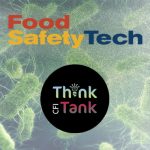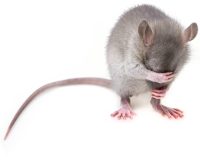After restaurants nationwide experienced several years of a stressful, disruptive labor shortage, the leisure and hospitality industry has recently added 128,000 jobs, leading all sectors.
Hiring new employees is exciting, especially after years of being seriously understaffed. As you welcome new employees to your team, do not underestimate the importance of onboarding, as 69% of employees are more likely to stay with a company for three years if they were onboarded properly. Additionally, organizations with an official onboarding process experience 50% greater new-hire productivity.
When new hires are trained properly, they feel more confident in their roles and the companies they work for can maximize safety, quality, and compliance. To accomplish this, restaurants and other food businesses should:
Adopt Integrated Digital Solutions
Tech solutions can improve all aspects of your operations, making everything from budgeting to scheduling, forecasting, purchasing, and inspecting more efficient, accurate, and streamlined. Tech tools offer many significant benefits, helping your brand save time and money, reduce waste, and optimize operations.
What’s more, an integrated tech stack can help you get a holistic view of your entire enterprise, whether you have one location or dozens. Easy-to-understand reports provide critical information, allowing operators to make more informed, data-driven decisions.
Digital tools do require an investment, but they offer a tremendous ROI. These solutions help improve safety, efficiency, transparency, accuracy, and consistency. These positive changes boost key performance indicators, including increased sales, profits, customer loyalty, and employee retention.
Prioritize Safety, Quality, and Compliance
Each year, 48 million (1 in 6) Americans get sick from contaminated food or beverages. Don’t let food safety breaches happen at your business!
Prioritize a food safety culture, where all employees work together to maximize safety and minimize risks. Put food safety protocols in place and be certain that all employees are following them. Provide the proper tools for employees to ensure food safety, such as Bluetooth sensors that can tell when walk-in temperatures rise above safe temperatures, and state-of-the-art food thermometers that ensure foods are cooked to proper temps.
It’s not enough just to follow proper food safety protocols yourself, you must be sure that all your suppliers adhere to the strictest food safety standards, as well. If you are following all the right protocols, but a supplier delivers compromised products, your customers (and your business) are at risk.
Food safety and quality assurance must be followed from each product’s point of origin until it’s prepared and served to the consumer. Audit all suppliers regularly and be sure that they have proper, up-to-date safety certifications. When you have multiple suppliers—as most food businesses do—it can be overwhelming to track and organize these important safety certifications manually. Tech tools make this ongoing process easier and more accurate.
Modernize Training Efforts
Some food brands, particularly smaller companies, think that they don’t need a formal training or onboarding process, or they rely on antiquated training programs that have been in place for many years. Swap out your outdated (and/or informal) training programs in favor of something more modern, relevant, and tech driven.
Add more interactive tech elements to your training program, such as microlearning platforms and gamification, to make the information more engaging and memorable. Supplement online training efforts with a live trainer, who can spotlight best practices, answer questions, and role play with your employees to make the lessons stick.
Don’t just tell employees what to do but explain why the rules are so important. Employees are more likely to comply when they understand why the rules are in place.
Keep in mind that training never officially ends. Provide ongoing training opportunities so employees on all shifts can keep important information top-of-mind. Digital tools not only provide key information during initial onboarding, but are essential for reinforcing lessons, delivering updates, and sending reminders throughout each employee’s tenure.
Work to Retain Employees
Did you know that the average restaurant employee changes jobs every 56 days, and that losing a front-line employee costs a restaurant an average of $5,864?
Digital solutions can help you retain employees, as these technologies make their jobs much easier. Tech tools can streamline tedious administrative tasks, such as inspections and inventory, so your employees can spend more time doing the things they enjoy, such as cooking delicious meals and interacting with guests.
Offer competitive pay, appealing benefits, growth opportunities, mentorship, and a supportive culture. And don’t discount the “seemingly small” gestures that can be a big deal to your team. Thank your employees often and sincerely. Praise them in staff meetings for going above and beyond. Write thank you notes. Give bonuses and small gifts. Promote from within.
Get Inspired by Innovative Brands
It may sound like something out of a science fiction novel, but White Castle has a robot working its fryer. Dominos has delivered its first pizza by drone. KFC is using facial recognition technology that recognizes repeat visitors and tailors their experiences based on their past orders and meal preferences. And Panera Bread uses geofencing to track each customer’s location so employees can promptly bring their order to their vehicle.
Your organization may not yet be able to afford robotics in your kitchen or drone deliveries, and that’s OK. But, as tech solutions become more affordable, accessible, and user-friendly for food businesses of all sizes and budgets, it’s clear that technology is improving many aspects of our industry. Digital solutions are no longer “nice to have” luxury items. They’re necessities for brands that prioritize consistently excellent and safe experiences.
By investigating and integrating new technologies, you can provide better service, safer food, and a more convenient dining experience. All of which will help you better meet (and exceed) customer expectations.

























